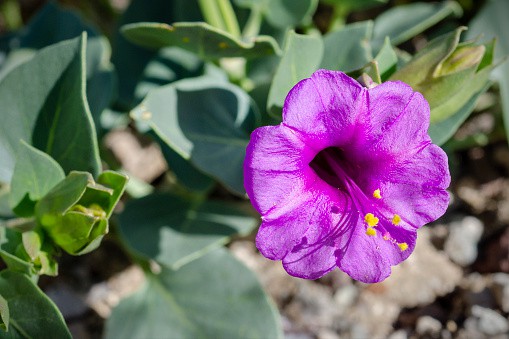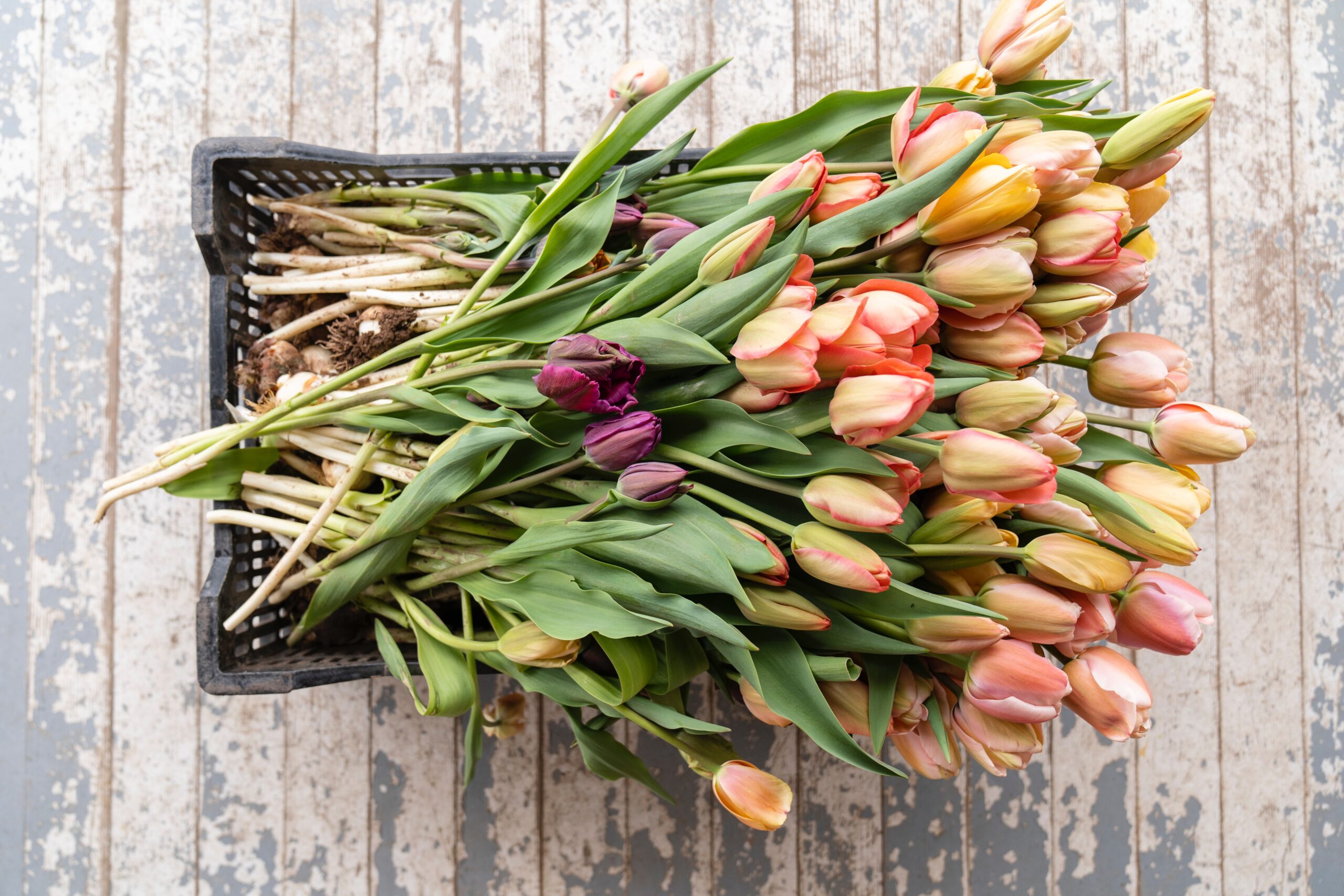Also known as marvel-of-Peru, Mirabilis Jalapa is an easy to grow flowering perennial native to Mexico and Central America. Its scientific name “Mirabilis” is derived from the Latin word for “admirable” or “surprising” due to the abundance of different colored flowers this plant produces. Jalapa, which is its specific species name, refers to the place it was first described: Jalapa, Mexico. This charming plant can be identified by its Bushy, flowering perennial characteristics which produce trumpet-shaped petals in shades of red or pink blooming in the late afternoon until the morning. This aromatic flower is both eye-catching and delicate, a perfect addition to any green garden that produces its unique colony from long-branched stems with ovate, toothed leaves.
How to Plant
Whether you are planting in a pot or in the garden, Four o’Clock Flowers appreciate full sun and well-drained soil. When the buds appear in summer, reduce the amount of water and fertilizer to ensure the longevity of the blooming period. A monthly feed of fish or nut meal to the soil may also help in reaping rewarding blooms. Temperature should be kept at the normal 20-25 degrees Celsius. For indoor potted plants, the soil should always be kept damp, but never waterlogged, while indoor temperature should be between 20-24 Celsius. For outdoors, select an area where the soil drainage is excellent as this plant can be adversely affected by soggy soil and high humidity.
Meaning and Symbolism
Four o’Clock Flower is hailed as a symbol of peace, love, adventure and beauty. Its miraculous blossoming often times signals to lovers the perfect setting for a passionate evening stroll while the gentle aroma of its petals fills the air. It is also believed to inspire resilience in difficult times as well as a sign of hope; it is said to be a reminder of Gods favor and mercy. In some regions, especially in the Middle East, people think that this flower blooms with tears of joy as a result of the sun’s mouth. Others call it the “flower of hope” and consider it a sign of good luck and fortune.
History, Mythology, and Religious Significance
Four o’Clock Flowers have had many uses throughout the centuries. It was used for medicinal purposes in countries like Mexico, where, among other things, it is used as a remedy for colds, sore throats and fever, as well as a sedative. Moreover, ancient Mexicans and Greeks used this plant as a source of dye, and when planting it with other flowers, they believed it would bring forth abundance and plenty. In terms of religious importance, in the bible this flower is believed to represent the untimely death of the victims of Pharaoh’s wrath, dying prematurely like flowers that drop before nighttime. In Hindu tradition, the Mirabilis Jalapa was known as “dhatura” and it was considered a flower of Lord Shiva and associated with courage, strength and victory.
Flower Varieties and Their Defining Characteristics
There are many different varieties of Four o’Clock Flowers, and each one comes with its unique characteristics. The most common varieties include Mirabilis jalapa var. jalapa, which can reach a height of up to 2 feet and produce flowers of pink and white. Then there is Mirabilis jalapa “Alba”, with white to cream flowers and green or purple foliage. Mirabilis jalapa “Bengal Rose” is a slender variety with white flowers and rose-pink markings, while Mirabilis jalapa “Gaint Rose” has white petals with bright rose flecks. Finally, Mirabilis jalapa “Merlin’s Purple” is a bushy and fully double-flowered variety, with purple petals fading to pinkish tones.
How to Pot and Repot
When potting or repotting Four o’Clock Flowers, make sure to use a pot that drains well. Use a soil mix suitable for succulents, such as a mix of equal parts garden soil, perlite, and compost. The soil should be moist and slightly acidic. To prevent root rot, use a smaller pot which can cause some crowding and encourage the plant to fill it up faster. The next time the plant gets root bound, simply repot the plant with fresh soil. To avoid any shock or trauma to the plant, transition gently, watering it twice or three times a week.
How to Prune
Four o’Clock Flowers should be pruned immediately after they have finished blooming. When pruning, it is best to start by removing any dead or diseased flowers, stems and branches as well as any fading old blooms. These should be cut off just before the point of emergence of the new buds. It is important to be very gentle when pruning as to not cause too much shock to the plant. After the pruning is done, add a few colors of mulch or some compost to give it more nutrients and to promote the growth of more flowers. It is important to fertilize the soil in order to ensure the growth and blooming of these plants.
How to Propagate
Four o’Clock Flowers can be propagated in two ways, either by seeds or cuttings. Cuttings are the preferred and easiest method for propagation. To do this, just take a cutting of the stem, remove any leaves and buds, and place the cutting in some moist soil. To ensure growth, it is beneficial to add a rooting hormone. If you want to propagate the flower with seeds, collect the seeds when the flowers die off and store in a cool, dark place. When planting the seeds, it’s best to sow them in the spring in well-drained soil and avoid direct exposure to the sun.
Common Pests and Diseases
Four o’Clock Flowers are prone to attacks from aphids, spider mites, caterpillars and other small pests, especially when grown indoors. To prevent or eradicate an infestation, try spraying the plant with a mix of one part rubbing alcohol with one part water. If the infestation is too big, spraying with insecticidal soap or a natural insecticide is a great option. As far as diseases go, aerial blight, powdery mildew, and root rot are the most common diseases of this type of flower. Prevent any infestation or diseases by making sure the plant is getting enough light and air circulation, and properly water it.
Three Frequently Asked Questions About Mirabilis jalapa
1. What is the family of Mirabilis jalapa?
Answer: The family of Mirabilis Jalapa is The Four o’Clock Flowers is Nyctaginaceae.
2. Is the Four o’Clock Flower toxic?
Answer: Yes, Four o’Clock Flowers is toxic and should not be ingested by people or pets.
3. What zones are Four o’Clock Flowers hardy to?
Answer: Four o’Clock Flowers are hardy to USDA plant hardiness zones 10-11.
Table Fact Sheet
| Plant | Data |
|---|---|
| Four o’Clock Flower | Mirabilis jalapa |
| Family | Nyctaginaceae |
| Plant Type | Perennial |
| Mature Size | Up to 2 feet |
| Sun Exposure | Full sun |
| Soil Type | Well-drained |
| Soil pH | Not particular |
| Bloom Time | Summer |
| Flower Color | Pink, white, and red |
| Hardiness Zones | 10-11 |
| Native Area | Mexico, Central America |
What we love from Amazon this week
Buy these wonderful flowers directly from Amazon:















